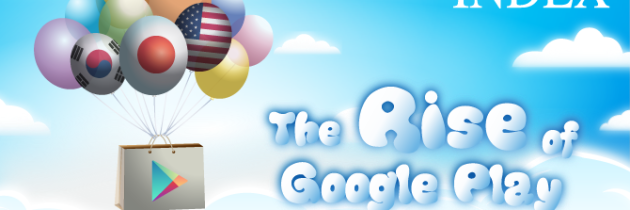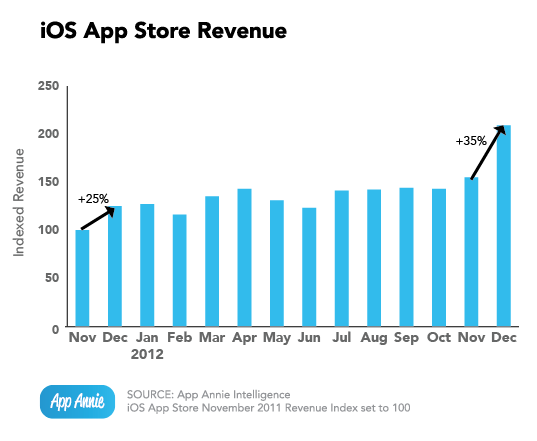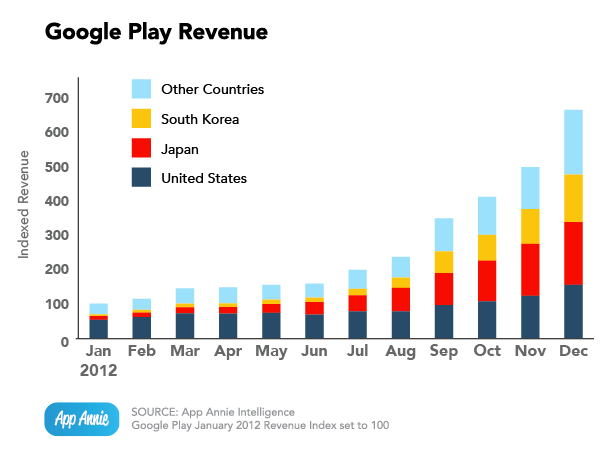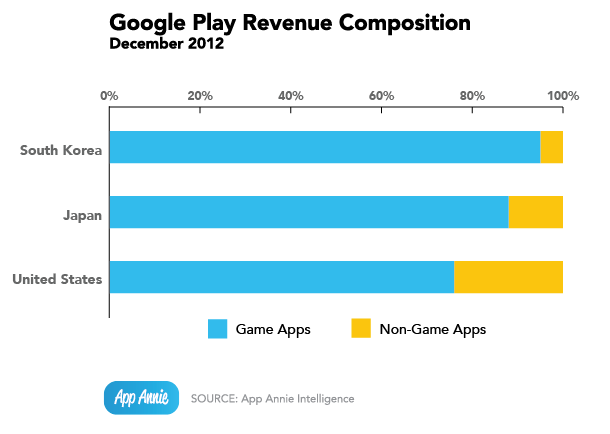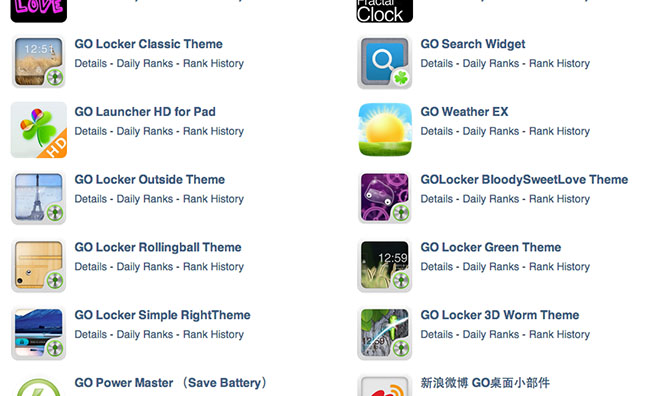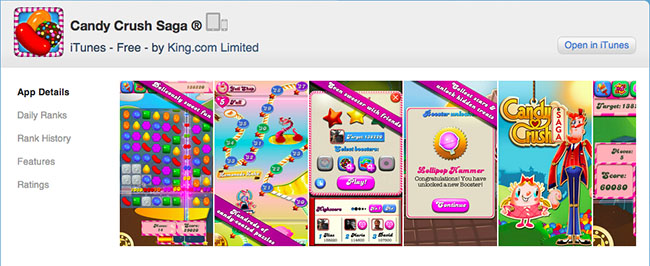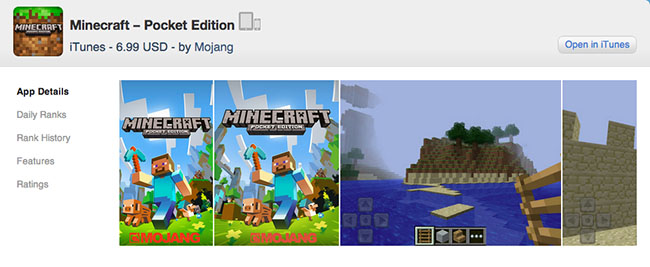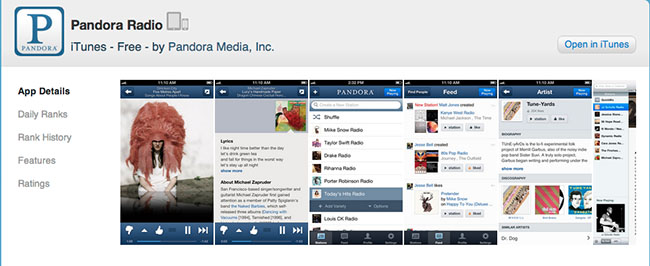The Rise of Google Play – App Annie January 2013 Index
Mobile Analytics firm App Annie revealed some insightful stats yesterday evening. The report touches on the rise of Google Play, as well as how the US and Japanese marketers differ in top ranking apps and the like. If you’re one who doesn’t like to read things that doesn’t have pictures, then fear not – this will have plenty.
To start off, December 2012 proved to produce record breaking revenue for the iOS App Store while Google Play revenue has doubled (and continues to double) quarter-over-quarter. Even though Google Play had a higher growth rate, the iOS App Store gained more overall revenue. This gain was driven in large part by record numbers in December where revenue from November increased by 35%
Historically December has always proven to be the most pofitable year all around with as many Holidays as there are. In ‘Power Week‘ alone 1.2 Billion Apps were downloaded, with over 17.4 million device activations.
With new iPhones and iPads (including the recently launched iPad Mini) this typically leads to a jump in app downloads, and consequently, app revenue.
Throughout Q3 and Q4 over 60% of the iOS Appe Store revenues came from the US, Japan, the United Kingdom, Australia, and Canada (in that order). In the last few months, however, one country in particular has been closing in – China; moved from the 8th spot to the 7th in October, and is now the 6th ranking country as of December. Given its recent growth rates and its population size, China’s eventual revenue potential for the iOS App Store cannot be ignored. Tim Cook even mentioned in Apple’s last earnings call, China now represents their second largest region and has demonstrated the highest growth rate (for Apple overall, not just for the iOS App Store). With his plans to increase Apple’s focus in China, we can expect to see further growth there.
In December 2012, Japan, the US, and South Korea remained among the top 3 ranking countries for total app revenues on Google Play. In the same month, 76% of US users attributed revenue was from Games. In Japan, that percentage was 88% and in South Korea users topped the charts with 95% of their Google Play app spend going toward games.
As seen in the chart above Apple, Google, and Electronic Arts remained the top publishers by downloads in the iOS App Store. Storm8 however, made the most significant changes in this months Top 10 list, jumping from #14 in November 2012 to #9 in December 2012. The publisher of Bubble Mania and Bakery Story enjoyed success over the holiday season as the company experienced 2 million downloads on Christmas Day across all app stores. Storm8 was one of the companies that took advantage of creating Christmas-themed in-app purchase items as well as promoting holiday-oriented adaptations such as Bakery Story: Christmas. And certainly repead the rewards by doing so.
Meanwhile, in South Korea, publisher NHN continued to enjoy success with their social networking app LINE, bumping up two spots. Rovio also rode the success of their Star Wars release and the associated halo effect, while Disney rose four spots from the previous month to come in at #5.
EA moved back to the number one spot largely due to the performance of The Simpsons – Tapped Out.
Japan’s GungHo Online Entertainment however, made the largest move, as they jumped 6 spots to crack the Top 5. The company is the publisher of Puzzle & Dragons, which dominates the Japan market. In November this game was launched onto the iOS App Store as well in an effort to attract gamers outside of Japan.
NHN also moved up 5 spots into #8. This success is said to be attribute to the fact that NHN was the only non-core gaming company in this Top 10 Publishers list. Within the Top 5, Gameloft moved up two places to #3.
When talking downloads on Google Play, Facebook continues to top the chart as the publisher with the most downloads. Just behind it is NHN. WhatsApp, however went down to #7. GO Launcher is the only Chinese publisher in this Top 10 list maintaining their #5 ranking. Interestingly, GO Launcher was initially a side project launched in 2010 by 3G.cn, (a leading mobile portal in China). Since making major improvements to the UI and UX of Android phones it has since become their flagship product used by consumers all over the globe.
Halfbrick (publisher of Fruit Ninja and Age of Zombies) moved back up to #9 after not ranking in November.
The Japanese and South Korean publishers continue to dominate the Google Play store in terms of revenue rankings, with 9 of the top 10 publishers being one of the two. Gameloft, fortunately is reppin’ the west by being in the Top 10 and also moving up three spots.
The big story in iOS Games Revenue is Candy Crush Saga from King.com. The game jumped 28 spots in rankings and is, simply, crushing it. It is said that the rapid rise in rankings from November to December is in part due to the fact that it was released mid-month on November 14 and as a result, its November ranking was based on only a partial month of activity. In December, however, the game has crushed it and spent most of the month in the Top 20 in both the US and UK.
Minecraft – Pocket Edition another big mover, moved up 4 spots to #8. The game successfully capitalized on the Christmas season with 700K+ downloads across both app stores.
LINE takes the cake for being the top Grossing non-game app worldwide. This also shows that the freemium model can work outside of the gaming world – as well as demonstrating the public’s affinity for virtual “stickers.” Stickers being: a large emoji (Japanese emoticons) that can be purchased from within the app.
Pandora also appears to be maintaining at #3. With much attention paid to the mobile music industry, it will be interesting to see if the company can retain its dominance in 2013.
As shown in the graph above, the Top 10 games in Google Play are all published by South Korean and Japanese companies. Most noticeable are LINE POP’s 32-spot rise and 모두의 게임 for Kakao’s 31-spot rise. Similar to that of Candy Crush Saga on iOS, the fast climb in the monthly rankings from November to December is due to the fact that these apps were released in mid-November (causing their November rankings to be lower).
While the Google Play app store is certainly more diverse in category, the iOS top 10 non-game revenue list is dominated by productivty and social networking apps.

